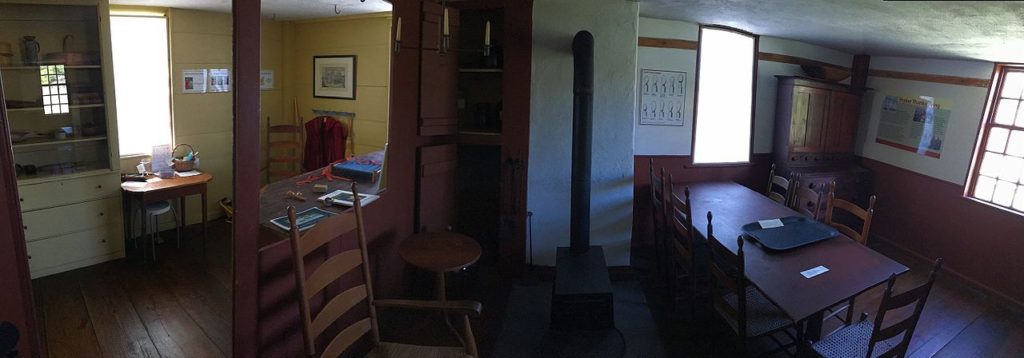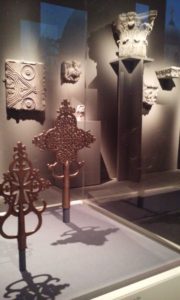
S. Brent Plate
There are over 850 million visits every year to museums in the United States, a count higher than that for sporting events and amusement parks combined. Hundreds of millions more visit collections online. Museums are go-to spaces for educational field trips, must-see destinations for tourists to new cities, sites for contemplation, for hands-on scientific exploration, and flint stones of socio-political controversy. They are also filled with religious objects.
Among all the media and means through which a broad swath of the public comes to understand religious lives and traditions, museums have emerged as some of the most prominent social institutions influencing the popular conceptions and imaginaries of religion. From history to natural history, art to archaeology, local to national, museums actively shape how people come to know about beliefs and practices other than their own, just as they challenge conceptions of one’s own cultural, religious, and national histories.
Exhibiting Religion

Major “secular” museums have created blockbuster exhibitions centered on religious art, artifacts, and history. In the past decade alone this includes a number of major shows, including: Sacred Spain at the Indianapolis Museum of Art (2009-10); Treasures of Heaven: Saints, Relics, and Devotion in Medieval Europe, co-organized by the Cleveland Museum of Art, the Walters Museum, and the British Museum (2011); Hajj: Journey to the Heart of Islam at the British Museum (2012); Yoga: The Art of Transformation at the Smithsonian Institution (2013-14); and Jerusalem 1000-1400: Every People Under Heaven at the Metropolitan Museum (2016-17).
Which is to say nothing of the permanent and ongoing exhibitions at the Rubin Museum in NYC; the Marburg Museum of Religions, Germany; St Mungo Museum of Religious Art and Life in Glasgow; the Museum of Contemporary Religious Art in St Louis; the African galleries at the LA County Museum of Art; or the Islamic calligraphy collection at Sakip Sabanci Museum, Istanbul, to name only a few places where religion is deeply embedded in museum spaces.
Within the United States, we find the traditions and experiences of religious individuals and communities being thoroughly represented in small museums (e.g., the Junipero Serra Museum, the Shaker Museum, Mary Baker Eddy Library, or the Nauvoo visitor’s center), and religious life and practice become key themes running through regional and national museums (e.g., Jewish Museum of Maryland, the Chicago History Museum, or the Bullock Texas State History Museum). Meanwhile, Lilly Endowment has recently donated millions of dollars for new research and curatorial developments in religious history at the National Museum of American History, and the National Museum of African American History and Culture.
Museums also become places where charges of blasphemy enter the public realm, as episodes over the past 20 years indicate, including those at the National Portrait Gallery (protesting David Wojnarowicz’s A Fire in My Belly), the Brooklyn Museum (protesting Chris Ofili’s Holy Virgin Mary), the Virginia Museum of Contemporary Art (protesting Mark Ryden’s Rosie’s Tea Party), and the Oakland Museum of California (protesting Alma Lopez’s Our Lady). By bringing religious topics into the public eye, museum displays unveil deeper religio-cultural currents and discrepancies. Important conversations, teaching moments, and public debates often emerge from these disagreements.
The Shifting Missions of Museums
Over the past generation, museums in North America and elsewhere have undergone a major shift. They are no longer merely repositories for the curiosities of kings or idiosyncratic collectors, though many of the larger museums still do benefit from the spoils of colonialism. Instead, museums increasingly see themselves in the service of society. Their responsibilities are to offer education, entertainment, and improvement for individuals, while also helping to effect social change. In the process they have become increasingly political, just as they have become increasingly implicated with histories of religion.
Whether devoted to art, archaeology, or history, museums allow a kind of neutral, public space to see the role of religion in the variety of human experiences. In spite of current talk about multiculturalism, most people don’t regularly interact with others from differing religious traditions, much less visit their mosques, temples, churches, and synagogues, or get the chance to see, smell, taste, and touch elements of other religious practices.
Nothing is fully neutral, as the Creation Museum in Kentucky might indicate, but museums allow new perspectives on the purposes and meanings of religious life. They are places designed to make visitors feel safe while being challenged by unfamiliar sights and sounds.
Even so, museums can spark ideologically charged debates that get taken up in public dialogues in the United States. This includes conversations about the Museum of the Bible, opening soon in D.C., and backed by a major conservative Christian group and promoting particular views of history, the Bible, and science. On the other hand, museums such as the American Museum of Natural History tend to downplay the term “religion,” opting instead for the seemingly neutral language of “culture,” “rituals,” and “symbols.” Then there are the ethical issues of cultural appropriation, and questions about when museums should repatriate sacred objects that were, legally or illegally, taken from another people and place.
A Fire in My Belly from Fotográfica Fundación Televisa on Vimeo.
Research Into Museums and Religion
Situated within new globalized flows of commerce, politics, and culture, the relations between religion and museums in the United States become a productive starting point from which to pursue multiple research trajectories in political, social, and cultural life. While religions and museums have long had close ties, scholarly work in the area is still relatively nascent. A small but growing list of publications includes Crispin Paine’s Religious Objects in Museums, as well as Paine’s edited Godly Things, Bruce Sullivan’s edited Sacred Objects in Secular Spaces: Exhibiting Asian Religions in Museums, and Louis Ruprecht’s Winckelmann and the Vatican’s First Profane Museum. Indeed, the recent edited collection, Religion in Museums: Global and Multidisciplinary Perspectives, which I co-edited, is an attempt to draw out a number of these issues in a global context.
The implications of the interconnections between religion and museums moves beyond traditions and collections to connect with international legal issues, cultural appropriation, secularization, corporate sponsorships, economic reform, histories of art, scientific methods, and theological orthodoxy.
As a medium, museums offer something for sensing human bodies that provoke interactive encounters, allowing visitors to get much closer to the thing called religion than simply reading will, operating more like a 4-D film than a book or a painting on a wall. As such, they trigger not just an intellectual collection of facts about religions, but emotional and bodily responses as well.
[This essay is partly adapted from contents found in Religion in Museums, edited by Gretchen Buggeln, Crispin Paine, and Brent Plate.]
S. Brent Plate is a visiting associate professor of Religious Studies at Hamilton College. His most recent book is A History of Religion in 5 1/2 Objects: Bringing the Spiritual to Its Senses. He is also co-founder and managing editor of the journal Material Religion: The Journal of Objects, Art, and Belief and a contributor to The Huffington Post and Religion Dispatches. He can be followed @splate1.
